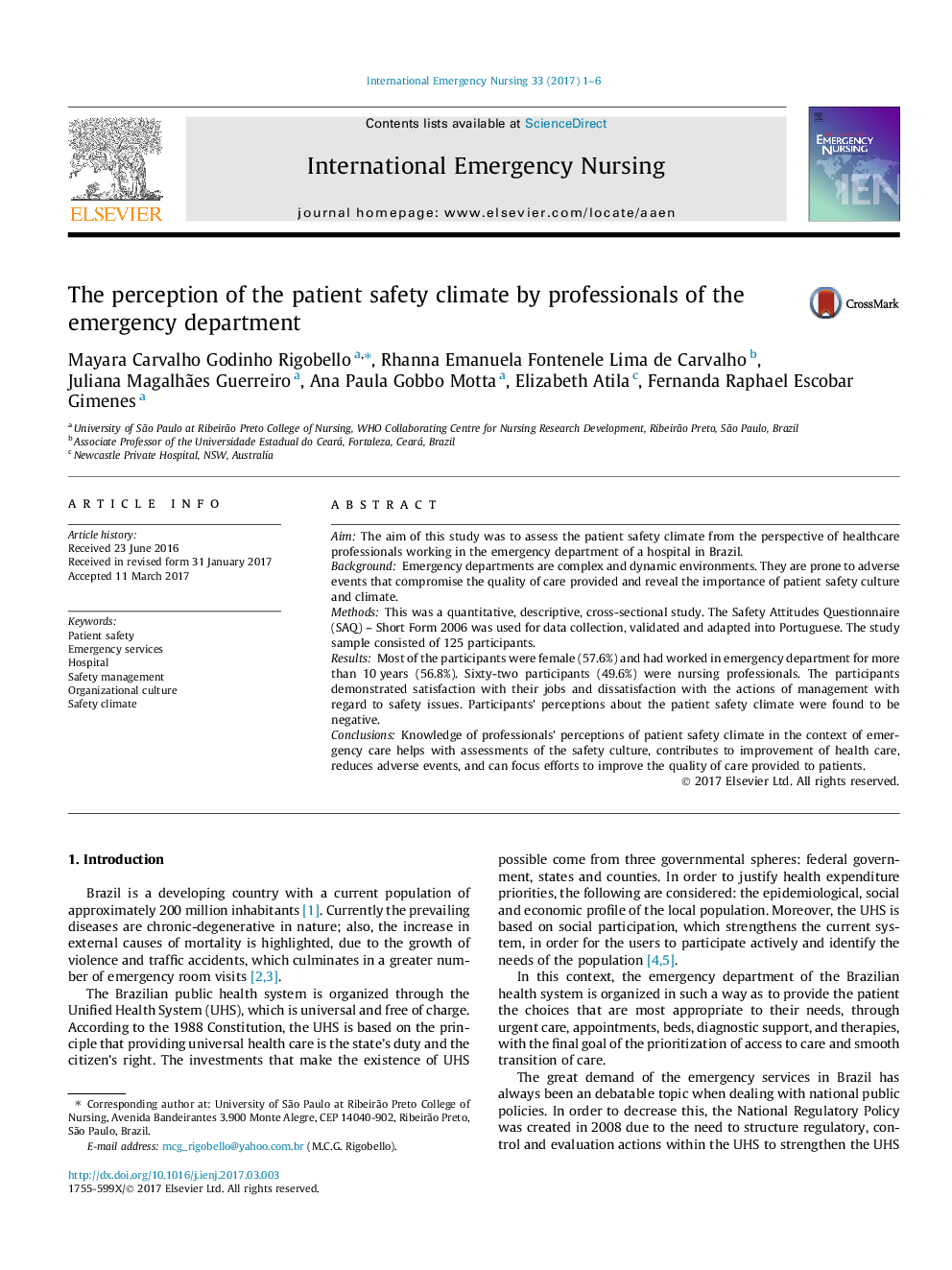| Article ID | Journal | Published Year | Pages | File Type |
|---|---|---|---|---|
| 5563062 | International Emergency Nursing | 2017 | 6 Pages |
â¢Critical and emergency care units are challenging and stressful environments.â¢Measuring safety climate assists in assessing safety culture.â¢Study participants' perceptions were considered to be negative.â¢The majority of study participants demonstrated job satisfaction.â¢Low scores for participants' perceptions of management may indicate fear of reprisals.
AimThe aim of this study was to assess the patient safety climate from the perspective of healthcare professionals working in the emergency department of a hospital in Brazil.BackgroundEmergency departments are complex and dynamic environments. They are prone to adverse events that compromise the quality of care provided and reveal the importance of patient safety culture and climate.MethodsThis was a quantitative, descriptive, cross-sectional study. The Safety Attitudes Questionnaire (SAQ) - Short Form 2006 was used for data collection, validated and adapted into Portuguese. The study sample consisted of 125 participants.ResultsMost of the participants were female (57.6%) and had worked in emergency department for more than 10Â years (56.8%). Sixty-two participants (49.6%) were nursing professionals. The participants demonstrated satisfaction with their jobs and dissatisfaction with the actions of management with regard to safety issues. Participants' perceptions about the patient safety climate were found to be negative.ConclusionsKnowledge of professionals' perceptions of patient safety climate in the context of emergency care helps with assessments of the safety culture, contributes to improvement of health care, reduces adverse events, and can focus efforts to improve the quality of care provided to patients.
